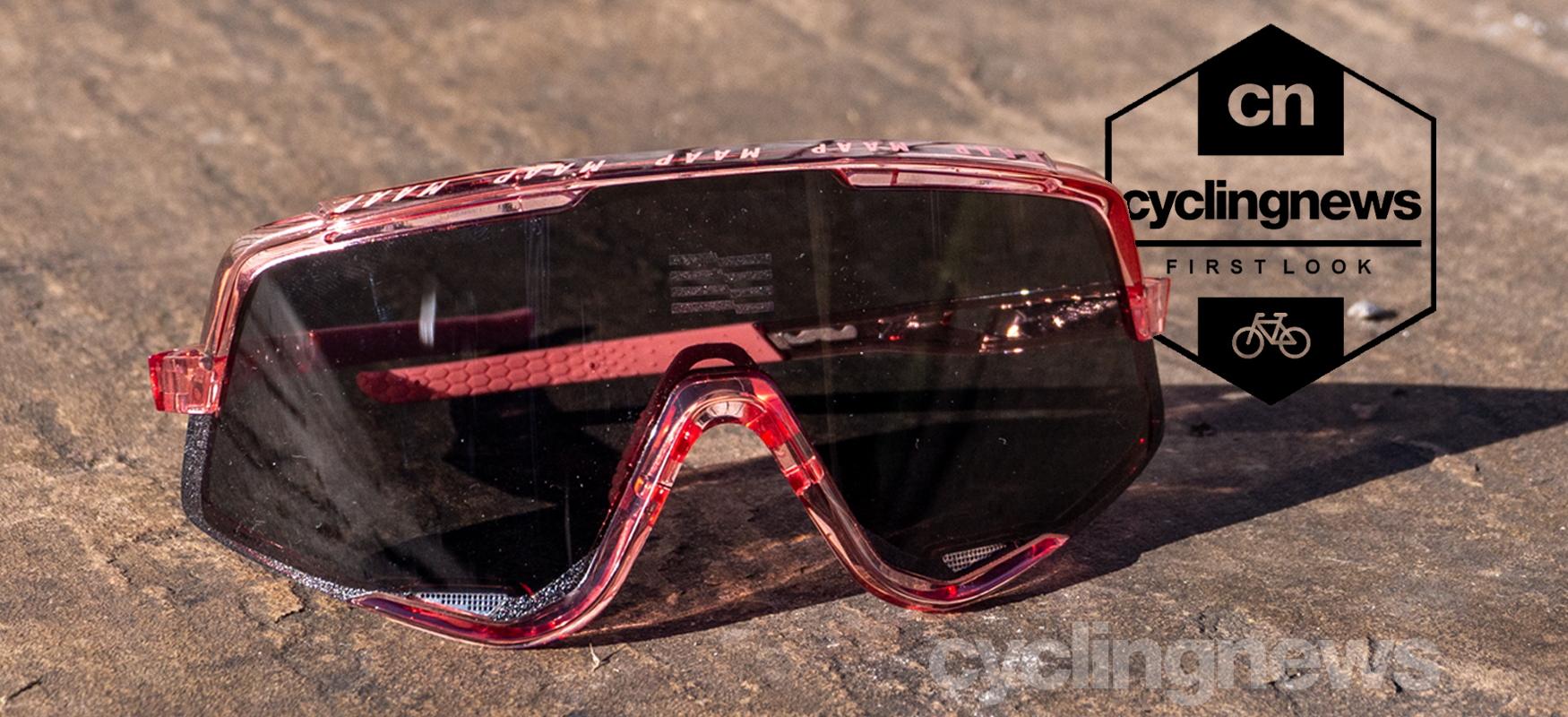Early Verdict
MAAP's ever-impressive design palmares gets a controversial win, while 100%'s Glendale sunglasses impress in both form and function
Pros
- +
Unrestricted field of view
- +
Interchangeable lenses
- +
Comfortable
- +
Impact-resistant lens
Cons
- -
Minor fogging during wet weather
You can trust Cyclingnews
It was announced last week that MAAP and 100% have joined forces once again to create a collaborative pair of cycling sunglasses. This marks the second collaboration between the two brands - the first coming at the beginning of 2020 - and it's a partnership that continues to impress.
This time out, it was the turn of the Glendale, one of the seven pairs of high-performance, high-price cycling sunglasses in 100%'s range. Going one better than last year, the 2021 collaboration yielded two colour options: navy blue, or light coral. No prizes for guessing which colourway we have here.
We've had our hands on these sunnies since the day of the launch. This collaboration marks this writer's first experience testing the Glendales, but the 100% portfolio is home to some of the best cycling sunglasses we've tested so expectation was high.
At AU$289.00 (€220.00 / US$220.00), they're not cheap cycling sunglasses, but the price puts them in line with Oakley's Jawbreaker and Flight Jacket sunglasses, and more than AU$100 less than the Sungod Velans if you plump for their techy add-ons.
Our test pair weigh in at 40g, meaning the claimed weight of 41g actually undersells them. We have used them for a week worth of riding so far using the HiPER Light Coral lens, and early impressions are positive.
Design and aesthetics
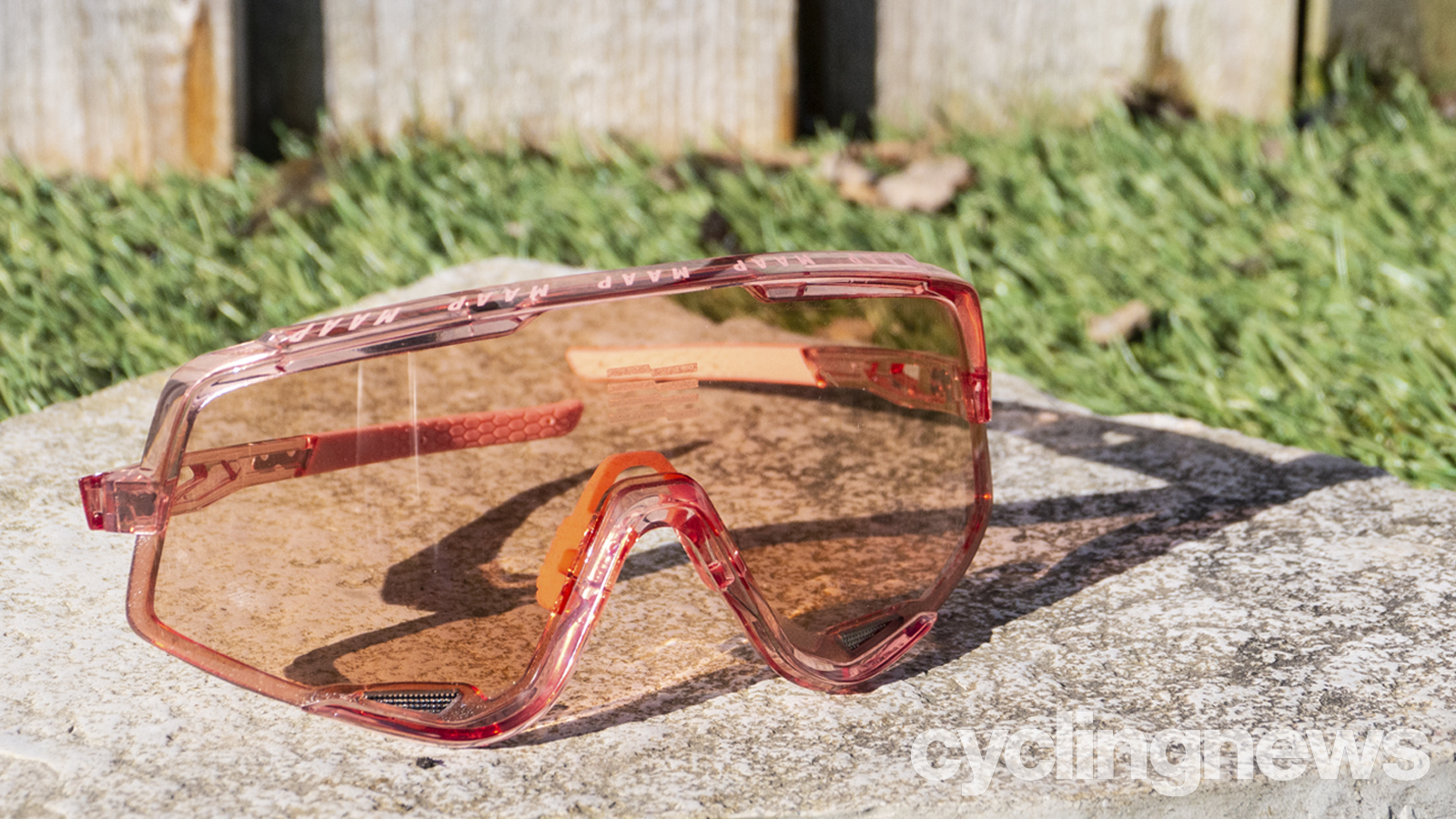
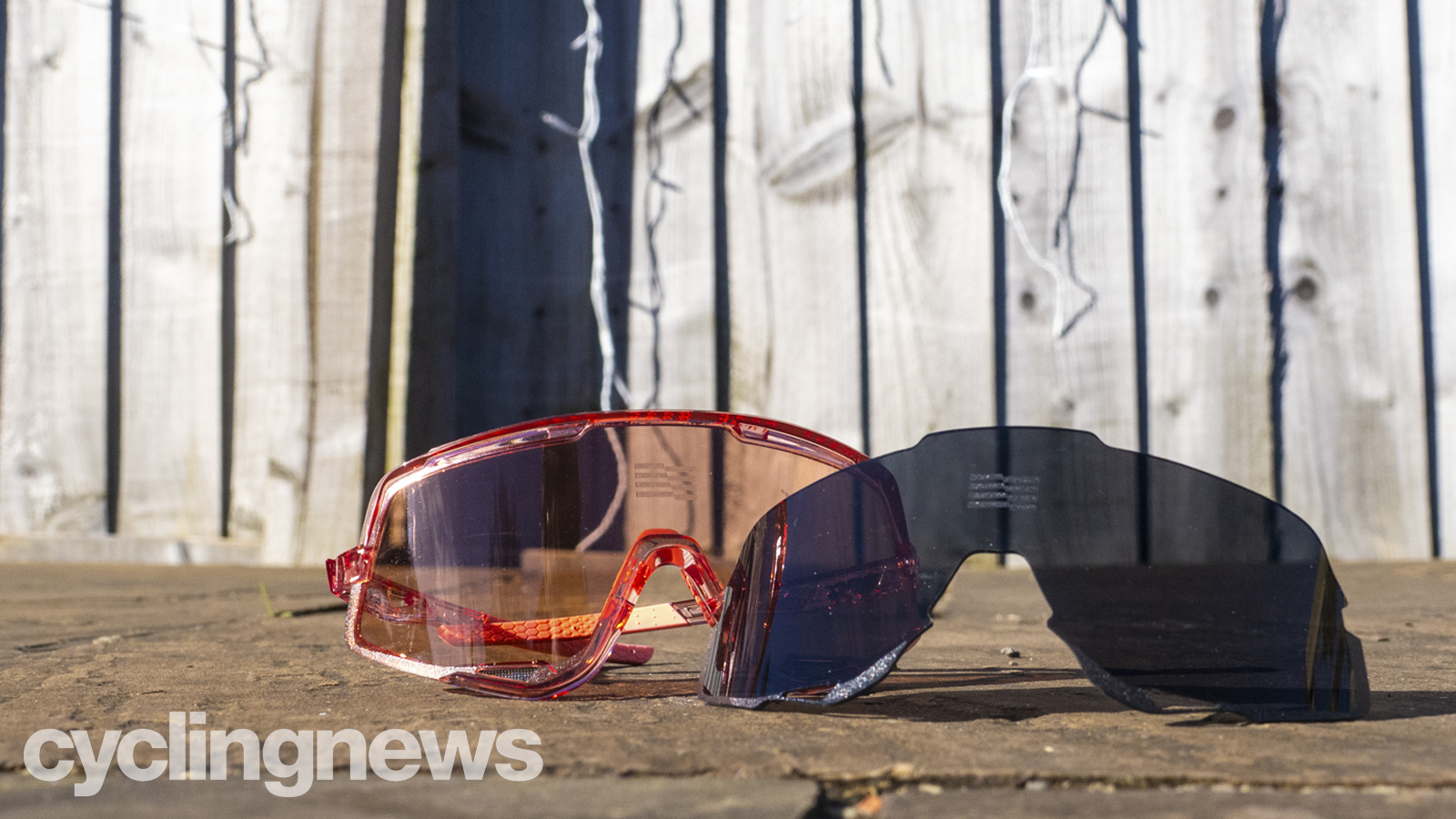
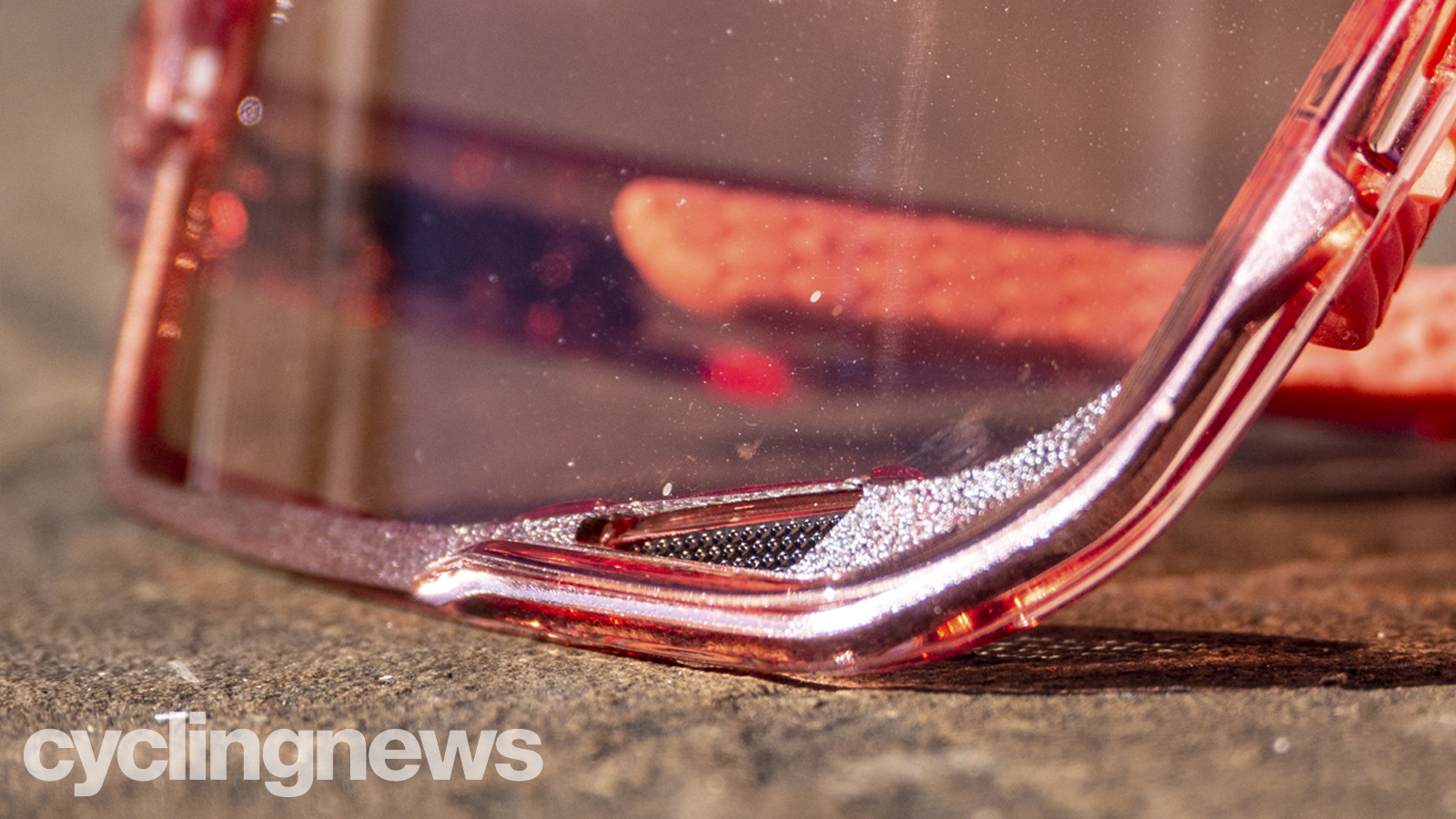
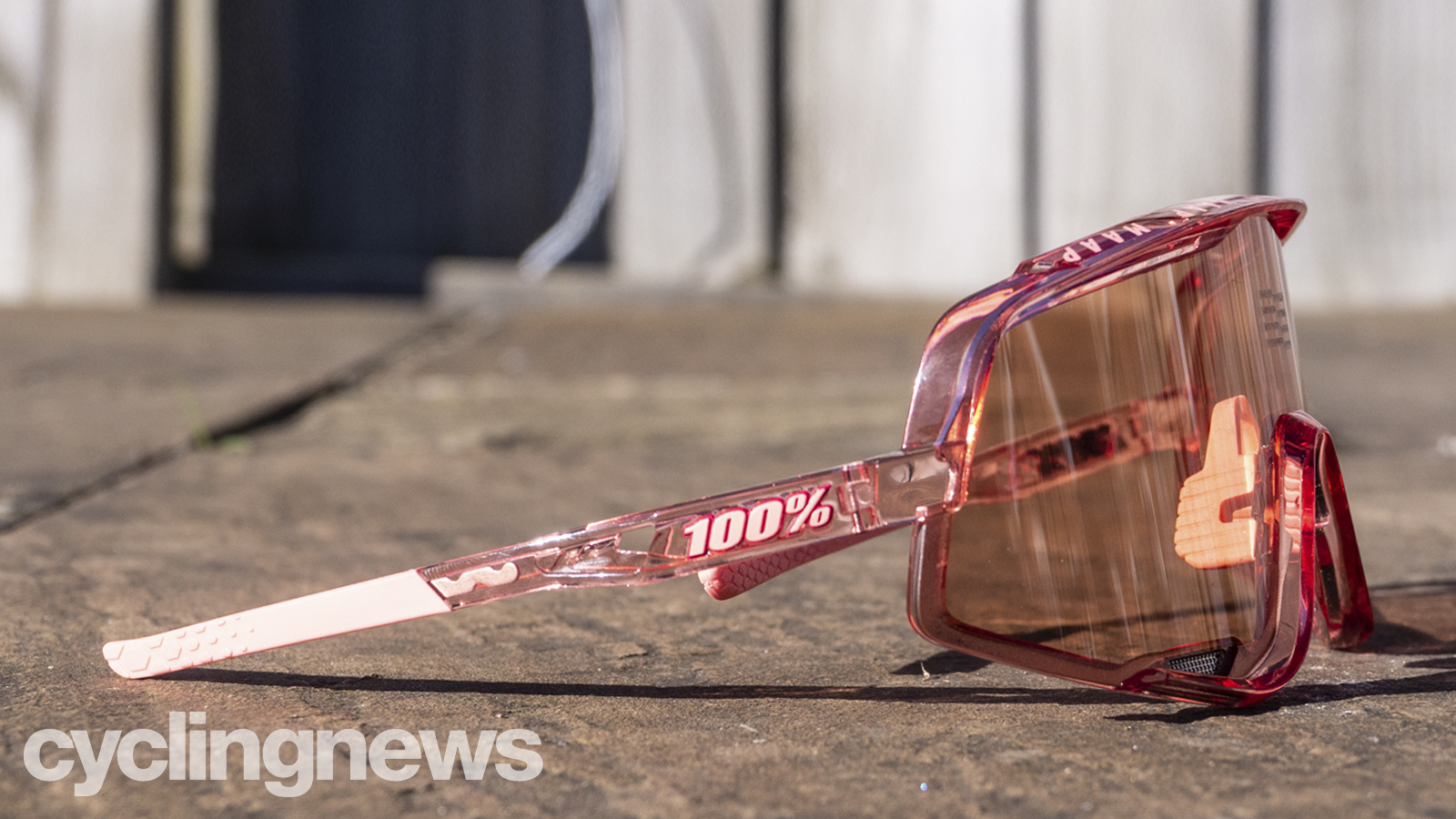
Functionally, these are no different to other 100% Glendale sunglasses, such as the standard colourways in the range or the limited edition Sagan options launched at last year's Tour de France. They feature the same full-frame construction with the trailing corners of the frame hiding behind the lens to give a half-frame appearance. The lens itself is removable, follows the modern oversized trend, and features small mesh venting ports situated beneath each eye for airflow.
Where they stand out is in their design. MAAP has an impressive palmares of striking, yet daring designs under its belt, and they've applied that very same tact here.
The frame and arms of the sunglasses are given a translucent effect, which as we've mentioned, can be found in either navy blue or light coral. For our light coral pair, the brow of the frame is matched with contrasting coral MAAP logos, as well as similarly contrasting rubberised ear stocks, nose pad, and 100% logos on the temples.
The translucence gives a certain industrial vibe to the design. Visible within the arms are the metal bracings that feed into - and then provide rigidity and adjustability to - the grippy rubberised ear stocks. It's not the most refined part of the package, but it's still subtle enough not to be offputting.
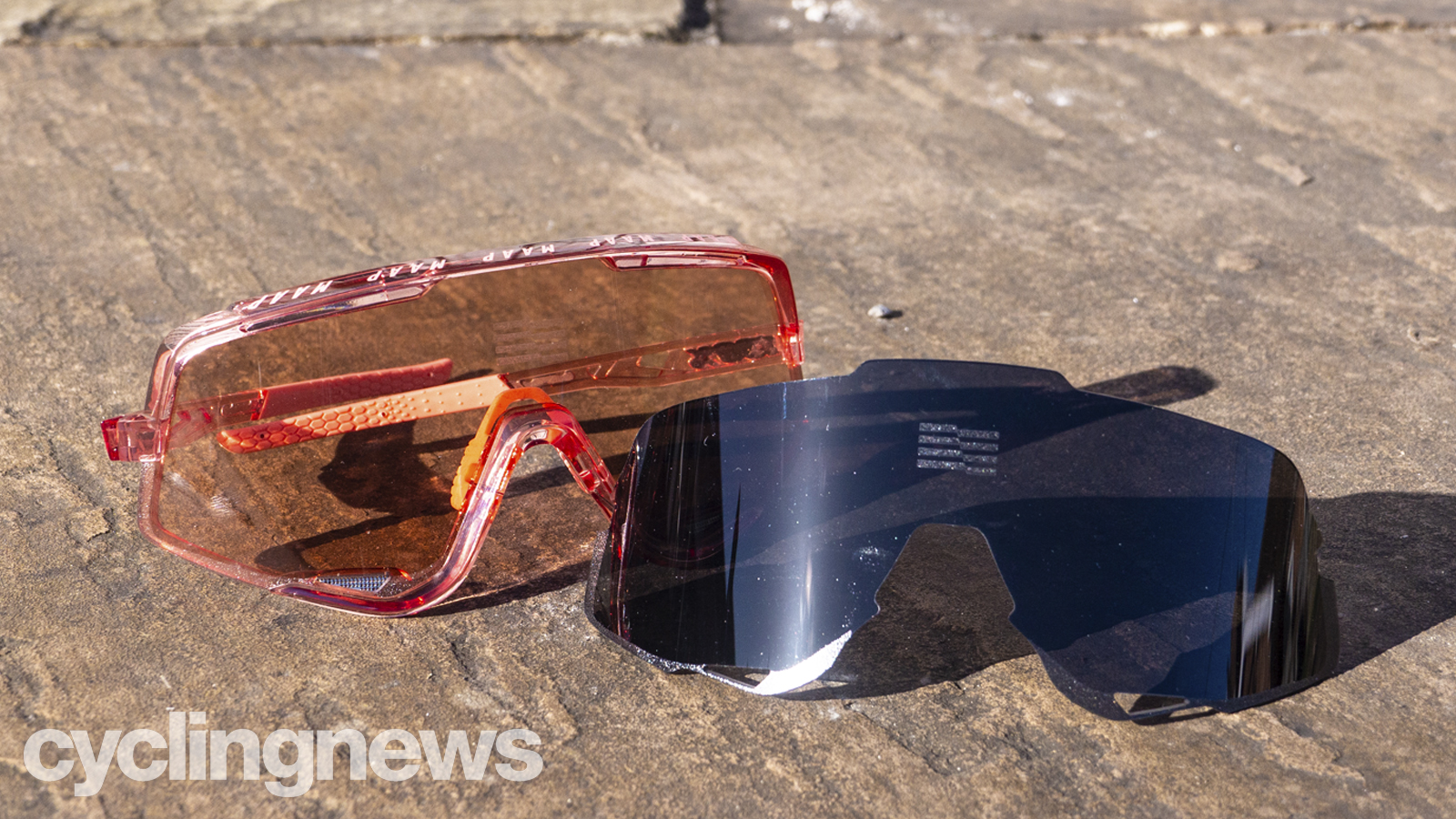
Where the translucence does offer some functional benefit is in the ability to see where the lenses are supposed to slot when changing them. My experience with other 100% sunglasses is that the lens replacement has always been a little tougher than the competition, so this was a welcome side effect of the MAAP design.
Performance
Functionally, the Glendales are a great pair of cycling sunglasses. As mentioned, they've only been on test for a little over a week, but in that time, they've almost entirely impressed.
The ear stocks and nose pad are secure yet forget-you're-wearing-them comfortable and the lens sits far enough away that you don't get that eyelash contact.
If pushed too far up the nose, the lens does contact this writer's brow such that smudges appear right in the eventual head-down-eyes-up eyeline, however perching them a few mm further down the nose solves this problem without any discomfort.
The oversized lens provides clear vision to approximately a centimetre beyond the limits of this writer's eye movement in up, left and right directions. There is a gap when looking down, but consider a cyclist's position on the bike and you'll soon understand why this isn't a problem.
Despite the airflow provided by this gap, as well as the mesh vents beneath each eye, there was still a small amount of fogging during one of the test rides undertaken thus far. An hour's worth of persistent drizzle was the test and despite putting up an early fight, the fogging started to appear above the left eye. A small chink in the otherwise brilliant armour.
The next test - which came at somewhat of a surprise when a stone was flicked up from a passing car - was demonstrative of the quality of the 100% HIPER lens. Aiming for an iris bullseye, the first this writer knew about the stone was when the lens stopped it in its tracks. The impact was startling, the noise almost deafening, but the lens stood strong. Sadly the anti-scratch coating didn't completely survive, but the ratio of impact to scratch size suggests it put up a good fight. Interestingly though, despite being in the line of sight, the scratch isn't visible when wearing them.
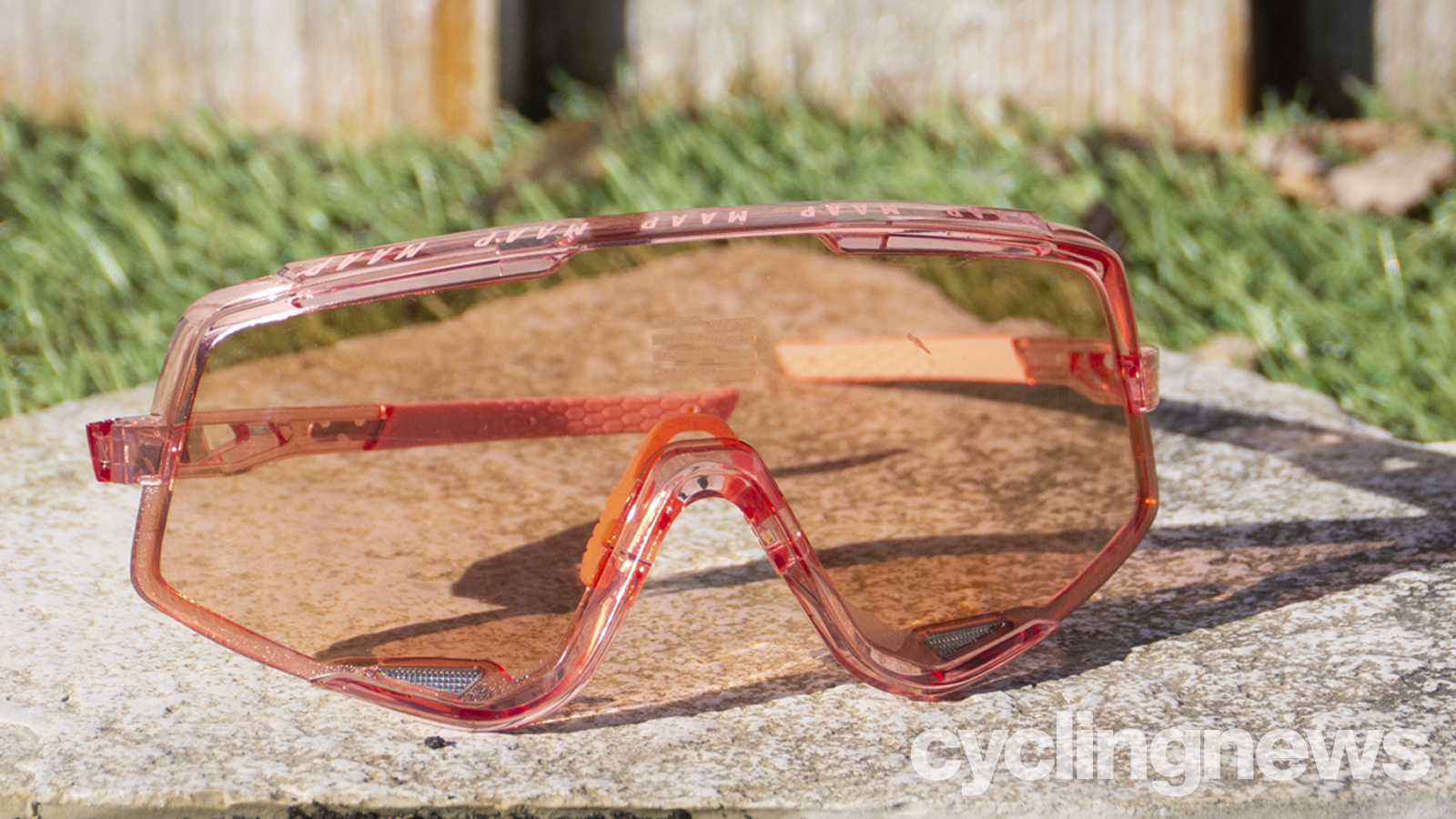
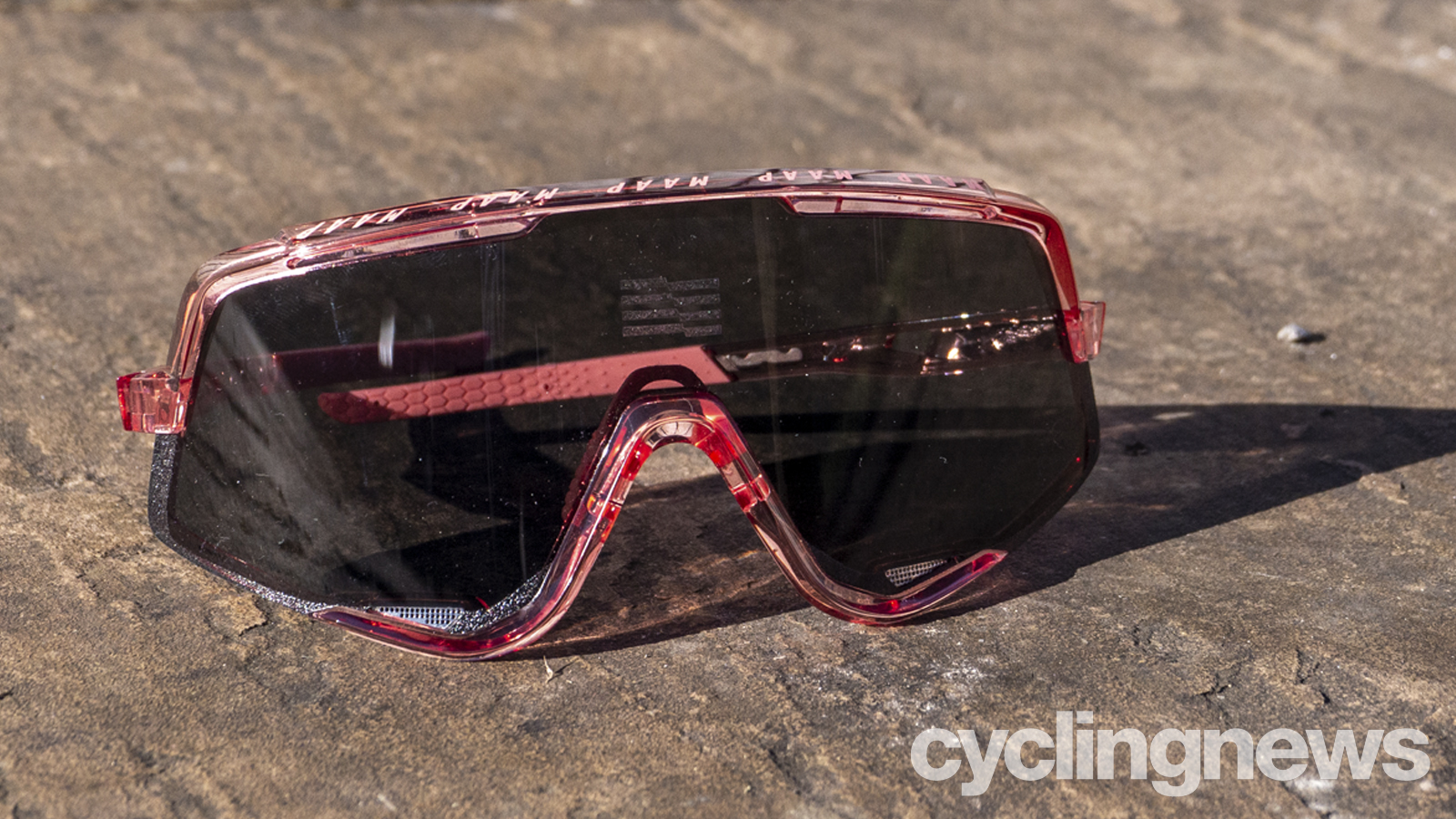
Ride time has been restricted to dusky evening rides thus far, so we're yet to put the Smoke lens to the test, but the HiPER Coral lens, which allows 52 per cent of light through, has aided vision and clarity with aplomb.
Verdict
If the opinions within the Cyclingnews office and this writer's group of friends is anything to go by, the design is a polarising one, to say the least. This writer has long appreciated a bit of daring design, and as such, the Light Coral is quite well-received, but nonetheless, I would still probably opt for the slightly less conspicuous navy, given the choice. Coral colour conundrums aside, the MAAP x 100% Glendales are an almost perfect pair of cycling sunglasses.
Further testing will assess the performance of the as-yet-unused Smoke lens and, whether we like it or not, we'll no doubt get plenty more opportunity to check out their performance in the rain.
Nonetheless, they're already the first pair we pick up when heading out the door.
You can view more info, and buy the MAAP x 100% Glendale collaboration at maap.cc

Josh is Associate Editor of Cyclingnews – leading our content on the best bikes, kit and the latest breaking tech stories from the pro peloton. He has been with us since the summer of 2019 and throughout that time he's covered everything from buyer's guides and deals to the latest tech news and reviews.
On the bike, Josh has been riding and racing for over 15 years. He started out racing cross country in his teens back when 26-inch wheels and triple chainsets were still mainstream, but he found favour in road racing in his early 20s, racing at a local and national level for Somerset-based Team Tor 2000. These days he rides indoors for convenience and fitness, and outdoors for fun on road, gravel, 'cross and cross-country bikes, the latter usually with his two dogs in tow.
What is a hands on review?
'Hands on reviews' are a journalist's first impressions of a piece of kit based on spending some time with it. It may be just a few moments, or a few hours. The important thing is we have been able to play with it ourselves and can give you some sense of what it's like to use, even if it's only an embryonic view.
